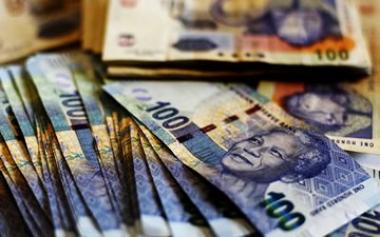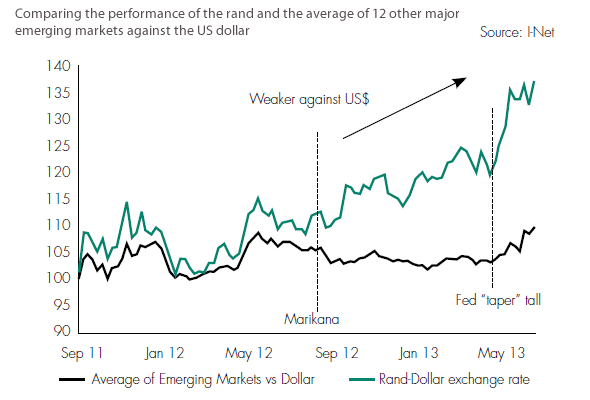The Rand’s ongoing roller-coaster ride
 The South African rand has always been one of the most volatile currencies around, but many investors probably feel the last few months have been particularly bad.
The South African rand has always been one of the most volatile currencies around, but many investors probably feel the last few months have been particularly bad.
The South African rand has always been one of the most volatile currencies around, but many investors probably feel the last few months have been particularly bad.
To understand why, we need some background information.
First of all, South Africa’s small, open economy gets swept along by global tides. Because our capital markets are freer and more sophisticated than those of many other emerging markets, our currency is more heavily traded than many of our peer currencies. As a result, it reacts very quickly to changes in sentiment in the world’s financial capitals.
Uncharted territory
Secondly, we are still in uncharted territory in the aftermath of the 2008 Global Financial Crisis. As South African Reserve Bank (SARB) Governor Gill Marcus recently noted in a speech, “The world is in its sixth year of crisis… a crisis that has repeatedly mutated, shifting its epicentre from a sub-prime crisis to a systemic banking crisis – a liquidity, fiscal deficit and sovereign debt crisis.”
Central banks have cut rates collectively more than 500 times since mid-2007 in response to the credit crunch, subsequent recession and sub-par recovery. When cutting short-term rates to the bone could no longer get the economy going, several major central banks resorted to unconventional monetary policy.
This has taken the form of committing to keep interest rates low well into the future, and buying bonds and other assets in the market to drive down longer-term bond yields and tempt investors to take on more risk. The size, scope and coordinated nature of many of these efforts are unprecedented and ongoing.
South African interest rates are also at historically low levels, but compared to the developed economies of North America, Europe and Japan, our interest rates are quite high. This has resulted in a flood of capital to our shores (and those of other high-yielding emerging markets), causing the rand to strengthen substantially from early 2009 to mid-2011, peaking at R/$6.55 in May 2011.
South Africa-specific issues resurface
However, while global investors were prepared to turn a blind eye to problems in emerging markets in their search for higher interest yields, they weren’t going to do so for ever.
The violent strike action throughout 2012, particularly the Marikana tragedy of August last year, shed light on South Africa’s economic deficiencies. At this point, the rand’s fortunes started diverging from other emerging markets; clearly, investors were more worried about South Africa-specific issues.
Apart from the poor state of labour relations, and low economic growth rate compared to other emerging markets, our large current account deficit has long left the rand vulnerable.
The current account is a measure of our economic relationship with the rest of the world, including the impact of trade flows, services costs and dividend flows. If there is a deficit on the current account, this needs to be financed by foreign capital. If the foreign capital dries up, the rand weakens.

Things took another turn in May of this year when the chairman of the US central bank, the Federal Reserve (the Fed), spoke about the possibility of reducing the size of its $85bn-a-month stimulus programme (also known as quantitative easing, or QE).
The mere possibility that the Fed could “taper” QE immediately transformed perceptions of relative risk and return. Less stimulus by the Fed implied higher interest rates in the US and hence less need to reach for yields in far-off places like Brazil, South Africa and Turkey.
The rand thus took another beating, along with the currencies of other emerging markets, breaching R/$10 for the first time in four years.












